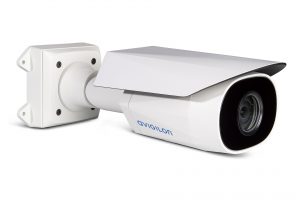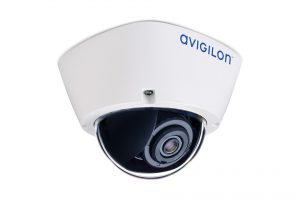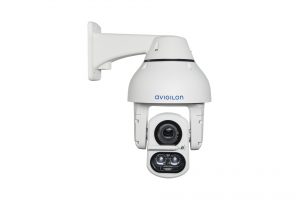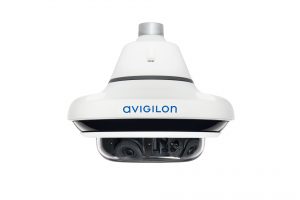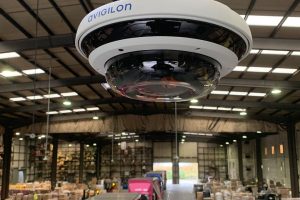Trying to pick the right security camera?
Contact Us. We can help.
Your site and facility securities are top priorities for the clients we support. Security cameras are one of the first tools they mention, and with good reason: they’re everywhere. You can find them in major cities, like Calgary and Alberta, securing hospitals, arenas, vehicle yards, hotels, and stores. They have just as much of a foothold in smaller communities like Fort McMurray, and they can be found in industrial environments (warehouses, refineries, manufacturing plants) just as often as commercial.
Because of the range of applications, there is a range of security cameras to choose from. So, when our clients ask us what cameras we’d recommend, the first thing we do is ask them about how they plan to use them.
If you have questions about using security cameras, you can Contact Us. Or, you can keep reading and get an idea of the different camera types that are available to you.
One quick side note: there is a considerable amount of terminology that comes with security cameras and video surveillance. So, we built a glossary for your reference. Take a look.
Bullet Cameras
As you might expect, bullet cameras get their name from the general shape. The image to the right is of an Avigilon H5A, which also has a dome model.
Bullet cameras are easily one of the more prevalent types of security cameras in use. They can be easily mounted, both indoors and outdoors. The fact that they are easily recognizable means they serve as a clear and obvious deterrent to reckless and criminal behavior – if people know they’re being monitored, they’re more likely to be on their best behavior.
Even though bullet cameras have been around for a while, they are by no means out of date. For example, the Avigilon H5A seen above offers considerable weather resistance (with an IP66/67 rating) and can operate in temperatures as low as -40 degrees Celsius. It can provide HD video and imagery, which will make identifying suspicious people and vehicles considerably easier. And, certain models come with IR illumination, which can be incredibly useful in low-light situations.
For more information on the H5A Bullet Camera, click here.
Dome Cameras
Like bullet cameras, dome cameras get their name from their shape. One major draw is that they are smaller, which can make them more aesthetically pleasing. That may be one reason you see these types of security cameras used indoors so often, in hotels, office buildings, shopping centers, and so on. While they may not be able to see as far as a bullet camera, they have a wider field of view. That means they can capture a wider image without panning left or right.
The Avigilon H5A does have a dome camera model (seen above). And, aside from the focal length, many of the features are the same. Like the bullet camera, it offers an IP66/67 rating, HD image and video, IR illumination, and reliable operation in extreme heat and cold. Both models also offer Tamper Detection, which helps alert your team if anyone should try and interfere with the camera’s operation, as well as motion detection and day/night operation modes, which can be activated automatically or manually.
Click here for the spec sheet and a full breakdown of the features.
PTZ Cameras
PTZ (Pan, Tilt, Zoom) cameras are designed to have an incredibly powerful rotation, tilt, and magnification capabilities. For example, the Avigilon H4A PTZ camera can rotate 360 degrees continuously and can rotate 450 degrees in under two seconds. The tilt allows it to rotate from 20 degrees below the x-axis to 90 degrees above, and it can zoom up to 30 times while still providing a detailed, 2 MP image. The IR (infrared) model can zoom up to 250 meters and still provide quality imagery and footage to your security team.
Let’s put this in practical terms. A PTZ camera like this can detect motion on your site, which is crucial to providing security in sensitive areas or after ours. The rapid rotation and zoom capabilities mean the camera can quickly focus on the suspicious activity a considerable distance away. The tilt capability means the camera can adjust to remain focused on the subject of interest as it gets closer or further away.
With excellent ingress protection and durability, cameras like this can be powerful security tools for indoor and outdoor applications.
Multi-Sensor Cameras
Multi-sensor cameras allow you to have multiple cameras built into one unit. The Avigilon H4 seen here is an example.
A camera like this can be an incredibly effective tool for providing 360 degrees of continuous surveillance. Imagine, for example, if you managed a warehouse or a manufacturing plant. Having continuous surveillance of everything happening on the facility floor would allow you to see if an incident had occurred if a door had been left propped open, or any relevant security events had occurred or were occurring.
Another advantage of these types of cameras is the simplicity of installations. Because you have multiple cameras in one single unit, you save time and money on installation (both labor time and the cabling required to support the unit).
Also, each camera in the unit can be configured individually. Consider the warehouse seen in the image to the right: the camera pointed at the open bay door could be configured to have a greater sensitivity to movement than the other three. That means it would notice sooner, and notify your security team more quickly if there was any movement at that entrance. If that movement were expected, as a delivery, there would be no reason to worry. But if it were an attempted break-in, you would know immediately and could respond accordingly.
Like most Avigilon cameras, the H4 offers excellent ingress protection and image quality. To see a datasheet, click here.
Wired vs. Wireless…. IP vs. Analog
There are wired and wireless security cameras on the market, and pros and cons to both. While wired cameras may be more expensive to purchase and install, they offer a greater range of features and reliability. On the other hand, wireless cameras can be cheaper, and they give you more flexibility when it comes to installation. However, they run on batteries that need to be replaced. That adds a level of maintenance and waste to your schedule and budget. The fact that they run on batteries could also lead to reliability issues when temperatures drop or more demanding camera features are used.
When it comes to IP vs analog security cameras, there is no comparison. Analog cameras may be cheaper, but they can’t offer anywhere near the level of image or video quality. What’s more, they aren’t capable of making use of video-analytics software that can make your security operation more effective and your use of security resources more efficient. Add that to the fact that further investment and innovation in IP camera technology will make it more affordable, and it’s clear that your security dollars are better spent on IP cameras.
Getting Started
Your work environment, security objectives, and budget will all play a role in helping you decide which cameras you want to use. Odds are your solution will end up incorporating a mix of them.
If you’re ready to start building that solution, or if you just have questions, Contact Us. Our team can support you through the entire process: system engineering and design, equipment procurement, installation, and on-going maintenance. We will work to build a futureproofed plan that fits your needs and your budget. We’re here to help.
Tridon is a full solution Telecom Systems Integrator with CSA certification and licensed by APEGA. Our Engineering, Service, and Tower Divisions collaborate with customers to build engineered solutions including communications systems design, tower inspections, and co-location, wireless broadband, fiber optic cabling, site security, and two-way radio communication.

